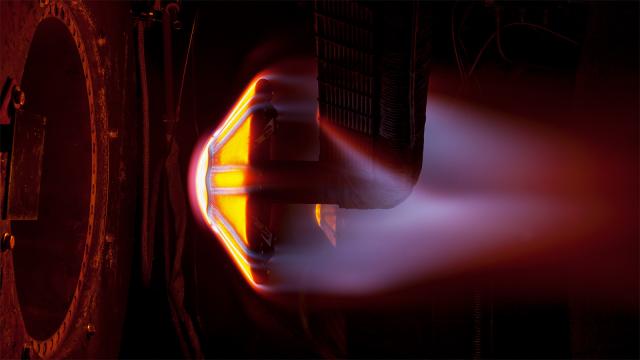Engineers at NASA’s Ames Research Center finished testing of their brand-new flexible heat shield designed for future Mars exploration vehicles, according to an announcement by the space agency today. Also included? This amazing image of one test.
In order to land a spacecraft safely on the surface of Mars, a larger heat shield is needed — because it not just has to protect against the extreme heat of entering Mars’s atmosphere, but it has to decelerate the spacecraft at a safe altitude in the thin Martian air. NASA explains how they want to do this:
NASA’s Adaptive Deployable Entry and Placement Technology (ADEPT) is one solution. ADEPT is a mechanically-deployable heat shield concept using carbon fabric: a flexible heat shield that expands to “open” like an umbrella. Recently, Ames’ engineers successfully completed heating simulation testing of an ADEPT model under conditions akin to entering the Martian atmosphere.
The photograph above shows one of these tests. In it, a flow of extremely heated air is exiting the 21-inch diameter nozzle from the left, causing a bow shock to form in front of the ADEPT test article, which is attached to a water-cooled support arm. Surface temperatures on the test article reached 1,700 degrees Celsius. The bluish-hue streaks, streaming away from the test article, are due to the decomposition of the resin-infused protective layers that prevent degradation of the stitched fabric joints.
[NASA]
